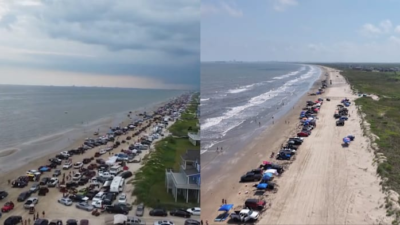-
The U.S. is set to lose $12.5 billion in travel revenue this year, according to data from the World Travel & Tourism Council
-
The findings, which were shared exclusively with Bloomberg, have been attributed to a number of factors including the rising American dollar and President Donald Trump’s “America first” attitude
-
If the predictions hold, revenues will be down 22% compared to 2019
The U.S. is on track to lose $12.5 billion in travel revenue this year, according to data from the World Travel & Tourism Council shared with Bloomberg.
The estimate represents a 7% decline in visitor spending year over year, and a 22% decline from 2019, when tourism in the U.S. reached its peak. If the projection holds, traveler spending in the U.S. will fall below $169 billion by year end.
Don’t Miss:
According to the WTTC, the U.S. is the only country out of the 184 surveyed that is projected to lose tourism dollars this year.
“Other countries are really rolling out the welcome mat, and it feels like the US is putting up a ‘we are closed’ sign at their doorway,” WTTC CEO Julia Simpson told Bloomberg.
The consequences of this shift could be devastating for the economy, Simpson warns. According to data collected by the WTTC and Oxford Economics, direct and indirect tourism represents 9% of the American economy. In total, the sector employs around 20 million people and creates $585 billion in tax dollars each year, which amounts to about 7% of all tax revenues.
“The US travel and tourism sector is the biggest sector globally compared to any other country, worth almost $2.6 trillion,” Simpson says. It’s a “major mainstay of the U.S. economy.”
Trending: Maker of the $60,000 foldable home has 3 factory buildings, 600+ houses built, and big plans to solve housing — this is your last chance to become an investor for $0.80 per share.
Some of the challenges the American tourism industry is facing are years in the making. For example, Simpson says restrictions from COVID-era travel lingered in the U.S. longer than they did in many other countries. Then the rising U.S. dollar started pricing people out, she told Bloomberg. These things kept visitors from places like Japan and Europe, countries who typically have a lot of tourists in the U.S., from making the trip.



